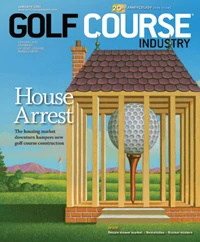When Japan’s economy hit a high note in the late 1980s, investors there looked to its neighbor, Hawaii, to invest their money in golf courses and hotels. Japan’s booming economy was reflected in those industries, but it didn’t last.
“When the Japanese economy went down in the early- to mid-90s, they started selling,” says Russ Dooge, CGCS, at King Kamehameha Golf Club in Maui, which consists of a private and a daily-fee course.
|
|
The state’s golf industry hasn’t quite rebounded from the hit, but a new set of investors and maintenance and marketing efforts are helping to lift it up. When King Kamehameha Golf Club was developed in the early 90s, it cost $100 million. The current owner bought it for $12.5 million.
“He put “$25 to $30 million into it, but it’s still a bargain,” Dooge says.
Similar situations are present around Hawaii as the industry works to get back on its feet after it rose and then fell with the Japanese economy. Courses still struggle with devaluation and decreased rounds as owners try to get their courses back up to par.
King Kamehameha’s ownership story is more the exception than the rule anymore. Where most courses in Hawaii have gone away from Japanese ownership, the owner of King Kamehameha is Japanese. His primary residence is in Japan, but he has a home in Maui.
Many other courses in Hawaii are going the opposite direction. Last February, Japanese hotel and railway group Seibu Holdings sold the Maui Prince Hotel, land and a golf course in Hawaii for about $575 million to a firm affiliated with Morgan Stanley, according to a Reuters news story.
The Prince Maui Hotel deal is an example of the new trend Rory Allison has noticed. Allison, chief superintendent at the Waikoloa Beach Resort golf course on the Big Island’s Kohala Coast, says large American companies are taking notice of the hotels and golf courses on the islands, and they’re in the position to do so.
|
|
“They can take the financial hit to build and recoup later because they have lots of stash,” he says.
Some of the courses in these transactions haven’t been maintained as well recently as they had during the Japanese boom. The conditions are one of the reasons for the waning interest, Dooge says. Before he renovated the daily course, he noticed golfers didn’t want to play on it because of a weed infestation that was partly due to the previous owner’s lack of interest and smaller maintenance budget.
“It took golfers a while to realize it wasn’t the same course,” he says. “When they came, they were pleased and came back.”
The decrease of rounds could, in turn, be causing a slowdown of new course establishment or supply. Supply growth (2.9 percent per year) outpaced Hawaii’s population growth (1.4 percent per year) in the 1990s, but since 2000, supply growth has decreased to 1.1 percent per year, with population growth averaging 1.4 percent per year, according to Pellucid, a Chicago-based golf industry information and insight provider. This doesn’t take into account tourist play, but since the 1990s, the state has provided a 20 percent oversupply of courses, about twice the national average for that period.
This is reflected in the total number of courses being established in the state. From 1991 to 1993, four golf courses were built each year, according to the National Golf Foundation. The biggest year since then was 1997, when there were three courses established, followed by two 1999. Other than that, one new course per year has been recorded since the early 90s.
Dooge hasn’t seen a new course open in Maui for quite some time. In fact, one shut down last year, he says.
While golf course supply has outpaced the demand that the local golfers create, that doesn’t take into account visitors. But that number seems to be declining, too. The number of golfers has diminished since Sept. 11, partly because there has been a decrease in travel, Dooge says. Those who travel are mostly from Japan or the western U.S. Allison hopes the influx of timeshares and condos being built near the course will help boost business.
In addition, courses aim to lure golfers with special pricing and giveaways when they can.
“We’re trying to give added benefits to rental property guests to give them access to the course,” Allison says. “We try to make added-value offers.”
King Kamehameha Golf Club also offers incentives to bring attention to its renovated courses, but it also keeps in mind the revenue isn’t what it used to be.
“We can’t give too much away,” he says. “We want to make some money.”
WANT MORE?
Enter your email to receive our newsletters.

Explore the January 2008 Issue
Check out more from this issue and find your next story to read.
Latest from Golf Course Industry
- Standard Golf announces new product lineup for 2025
- The Salt Pond taps Troon for management
- KemperSports selected to manage Swansea Country Club
- From the publisher’s pen: Grab that guide
- Introducing our April 2025 issue
- South Carolina leaders honor golf course superintendent
- One and only
- Wild can be good







